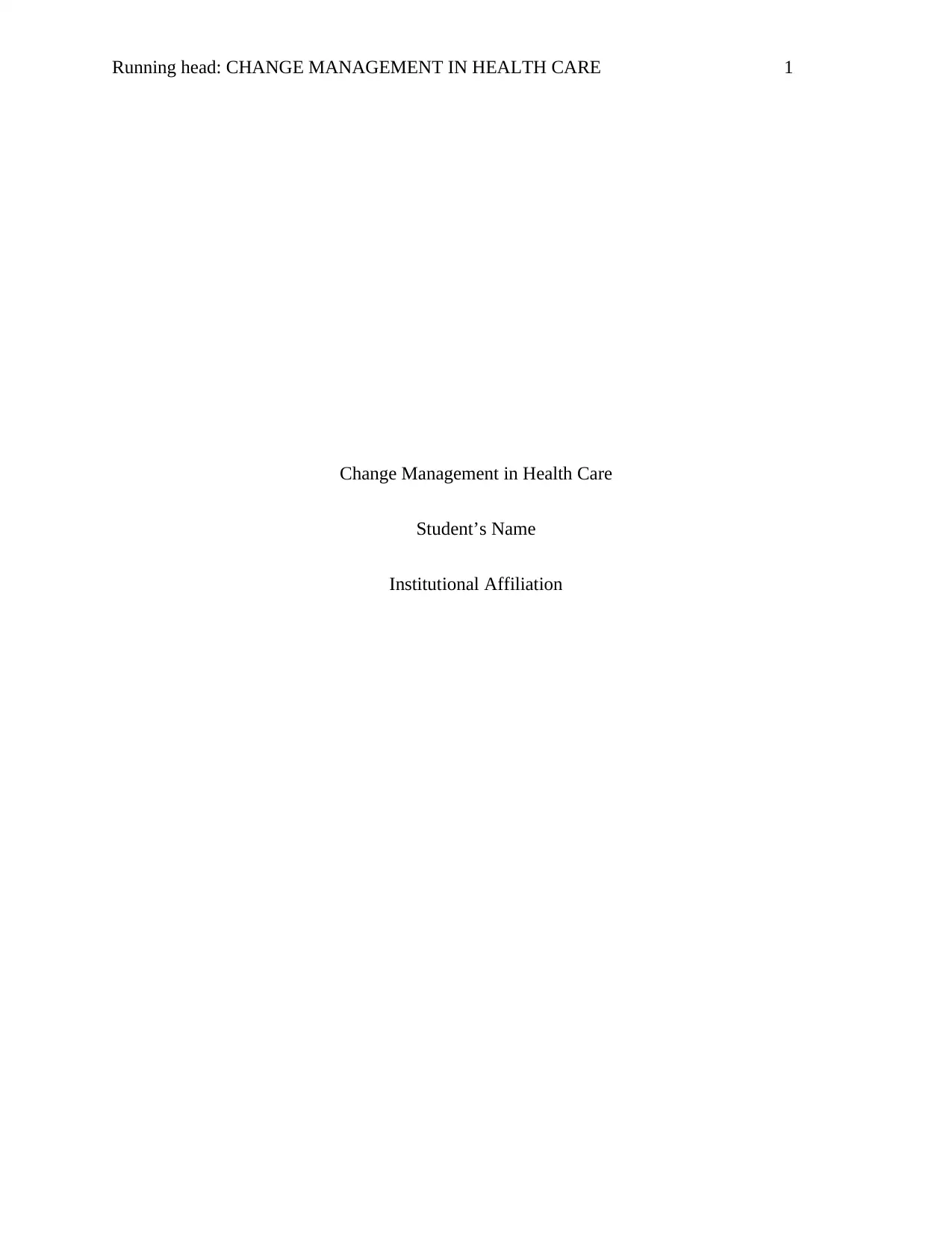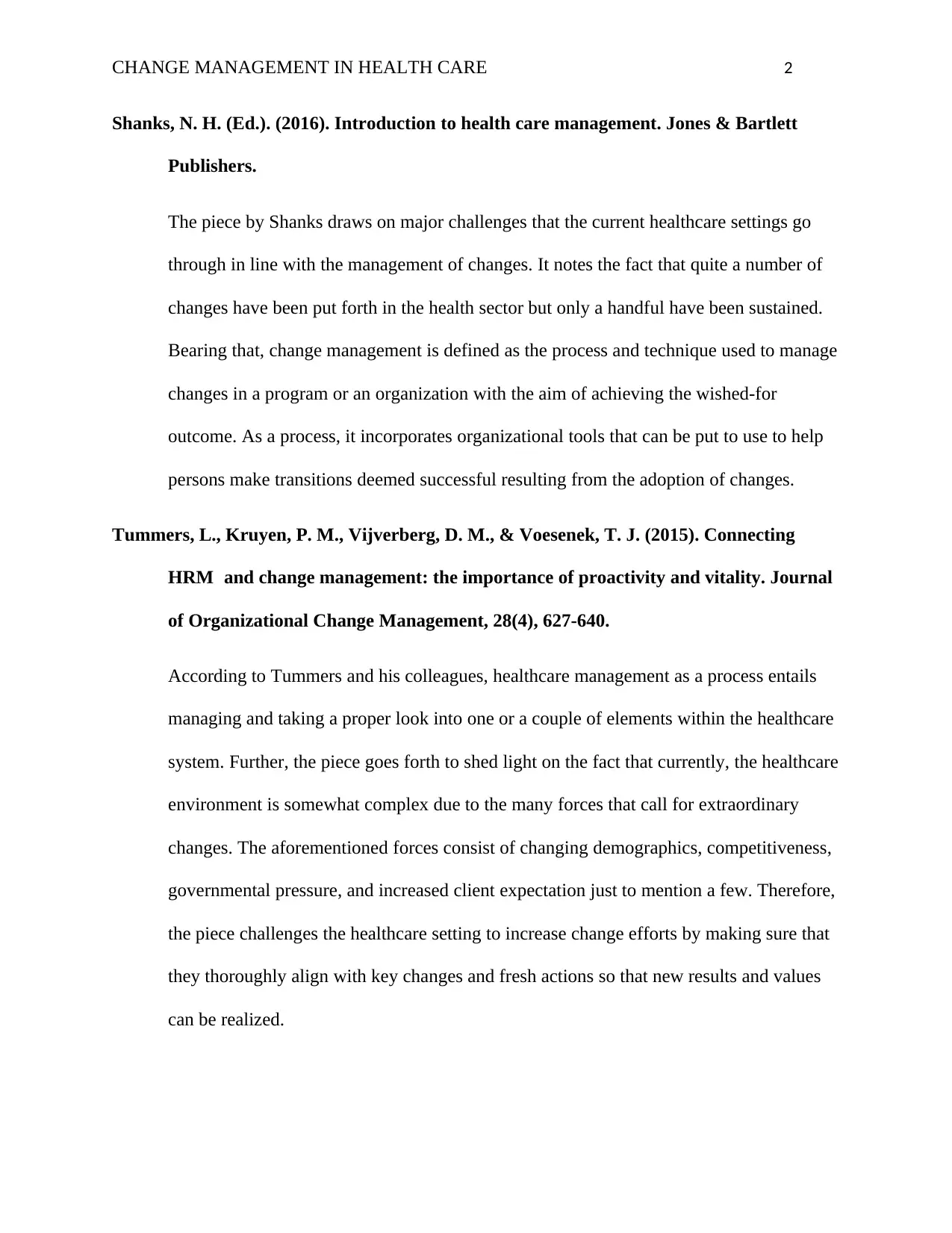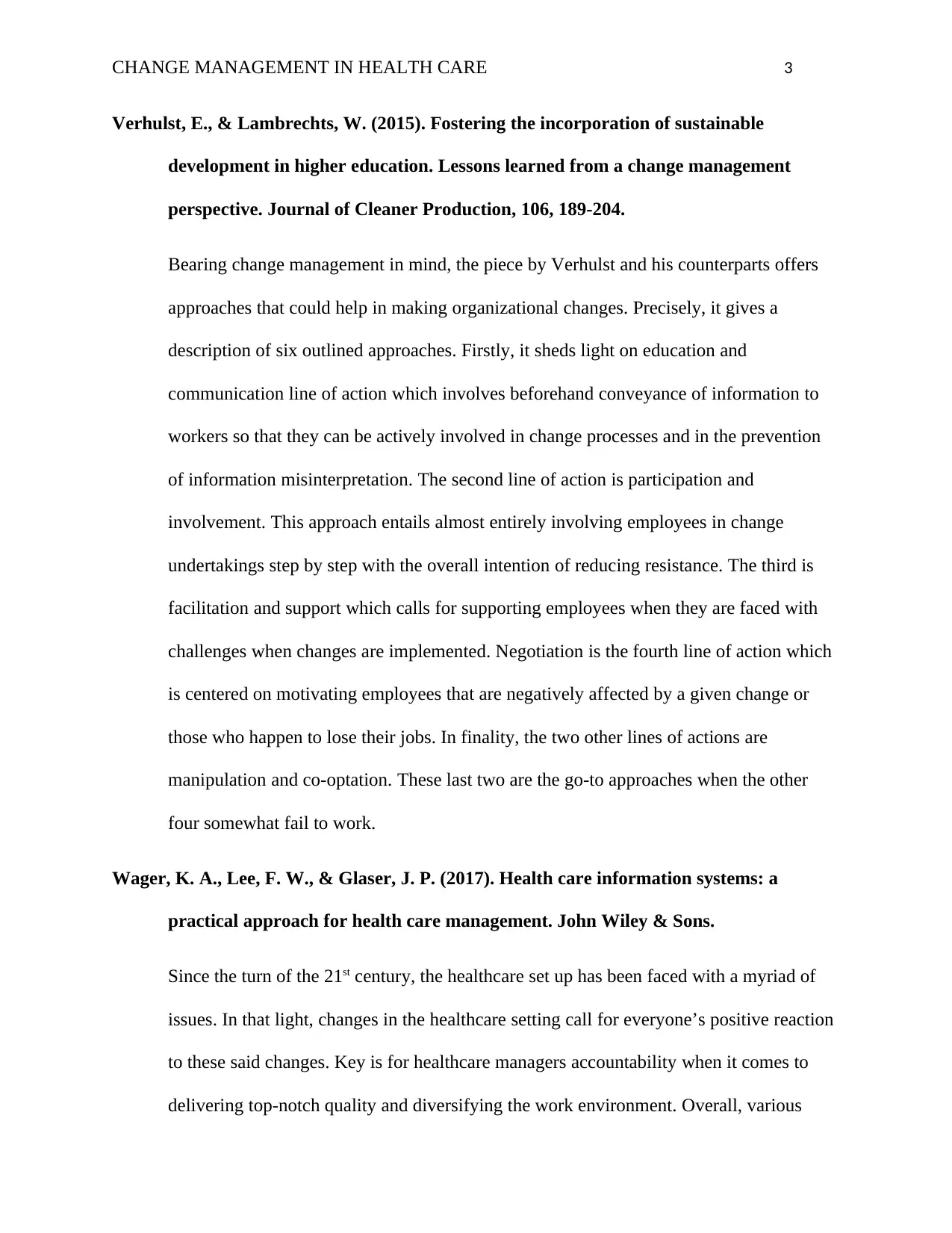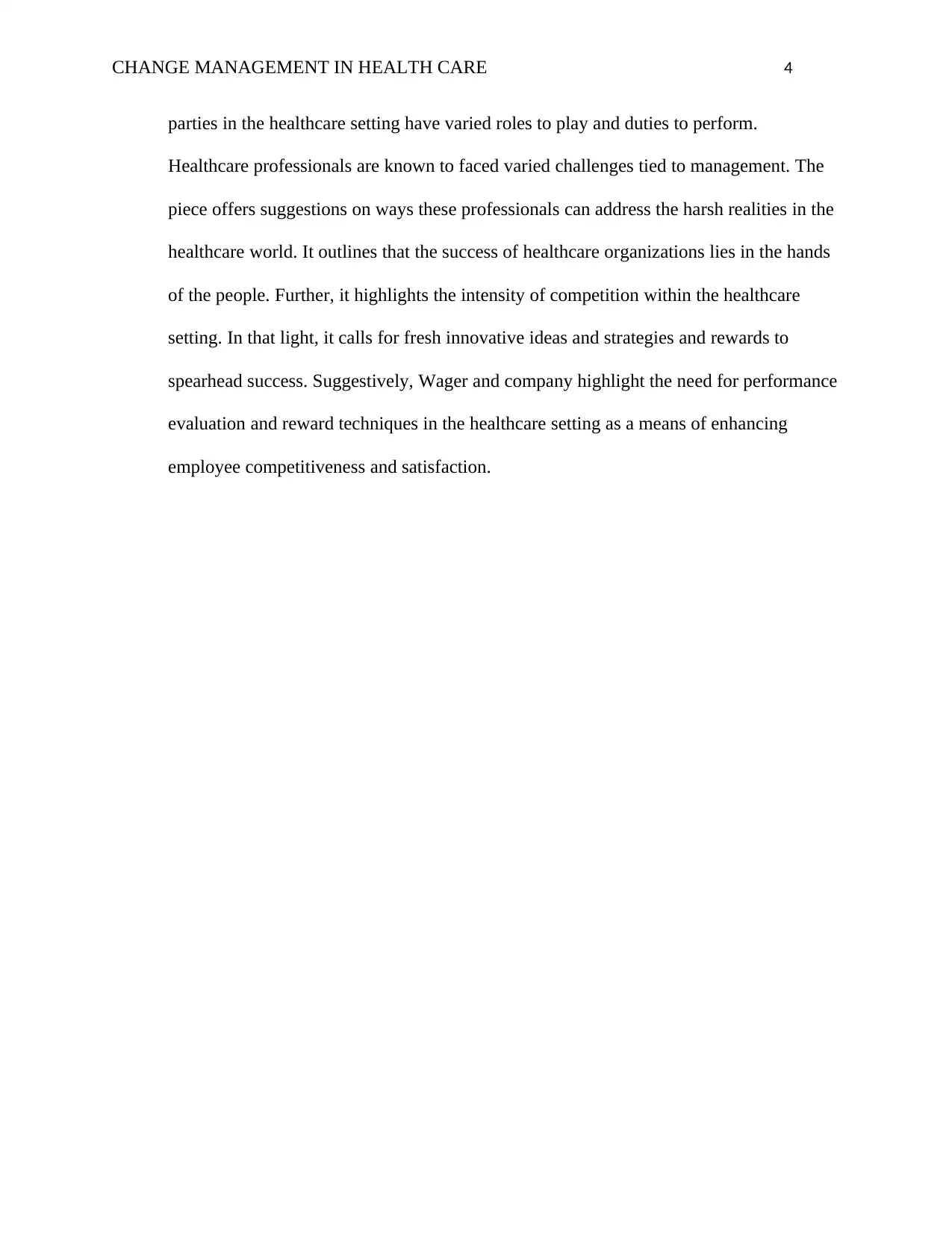Annotated Bibliography for Change Management in Healthcare Research
VerifiedAdded on 2022/11/13
|4
|774
|416
Annotated Bibliography
AI Summary
This annotated bibliography, created by a student, focuses on change management in healthcare. It includes APA citations and annotations for three sources deemed relevant to a research paper, demonstrating a methodology for organizing research sources. The annotations summarize each source, explain its relevance and significance, and follow APA style guidelines. The bibliography covers key aspects such as challenges in healthcare settings, strategies for managing changes, organizational approaches, and the importance of employee involvement and satisfaction. The sources address topics like change management processes, the impact of various forces on healthcare, and the need for innovative ideas and strategies in the healthcare environment. The document also highlights the importance of performance evaluation and reward techniques to enhance employee competitiveness and satisfaction.
1 out of 4








![[object Object]](/_next/static/media/star-bottom.7253800d.svg)